Abstract
An epidemiological and environmental study of rock and slag mineral wool production workers was undertaken at a plant that has been in operation since the early 1900s. Size characteristics of fibres produced by each process at the plant and data from industrial hygiene surveys were used to evaluate current and past exposures. These data suggest that the average historical airborne fibre concentration probably did not exceed 2.5 fibres/cc before 1935 and 1.0 fibre/cc after 1935. A retrospective cohort mortality study was designed to assess mortality patterns. Detailed occupational histories were compiled on all plant employees. All jobs in the plant were assigned to one of eight potential exposure categories to assess the extent and severity of mineral wool exposure and the effect of other significant exposures on employee mortality. Findings included an increase in the number of deaths due to cancer of the digestive system and non-malignant respiratory disease among workers who had over 20 years' exposure to mineral wool or who had survived 20 years since their first exposure to mineral wool. These findings are not inconsistent with those of Enterline's (Symposium on Biological Effects of Mineral Fibres, Lyon, France, September 1979) in the Thermal Insulation Manufacturers' Association's mortality study of men employed in four mineral wool plants.
Full text
PDF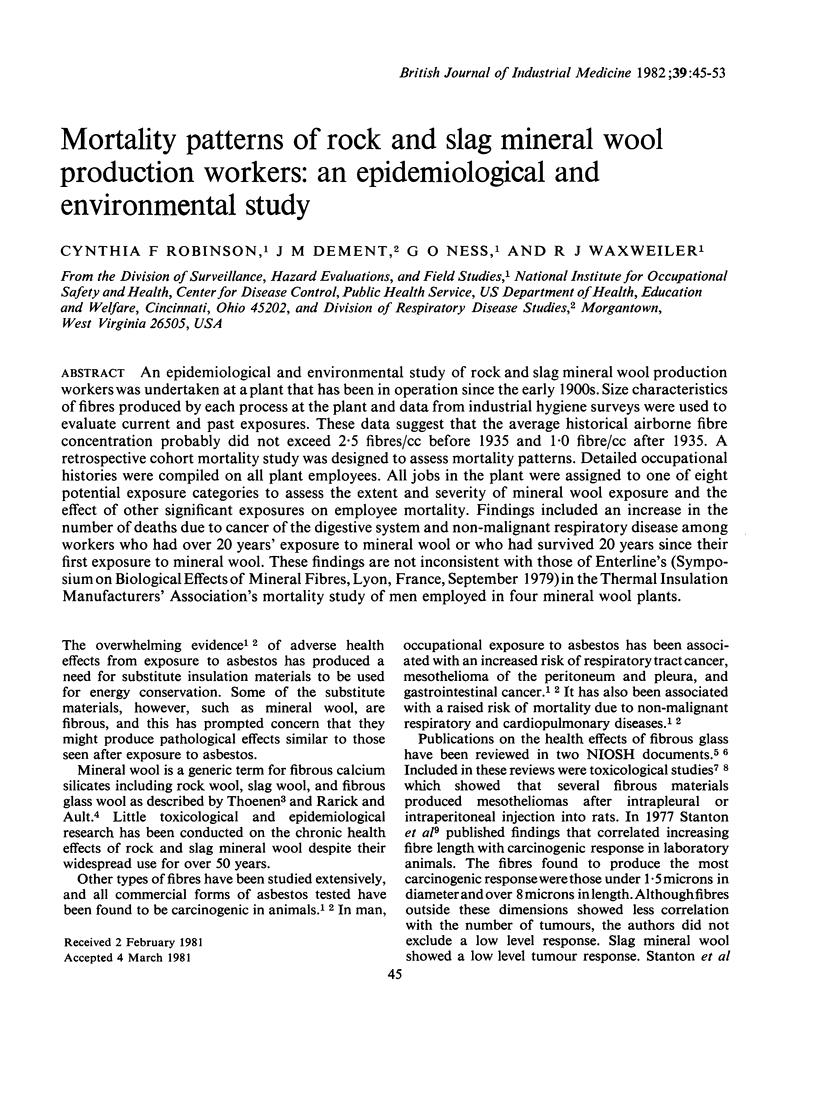
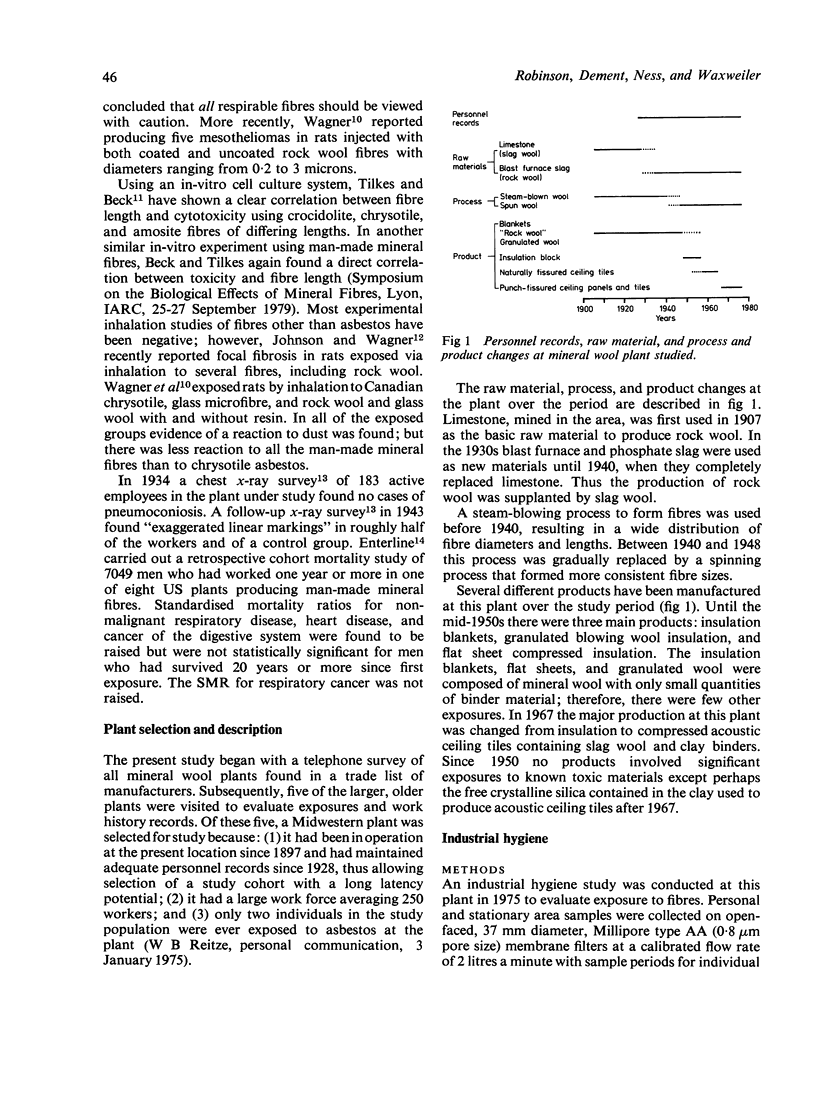
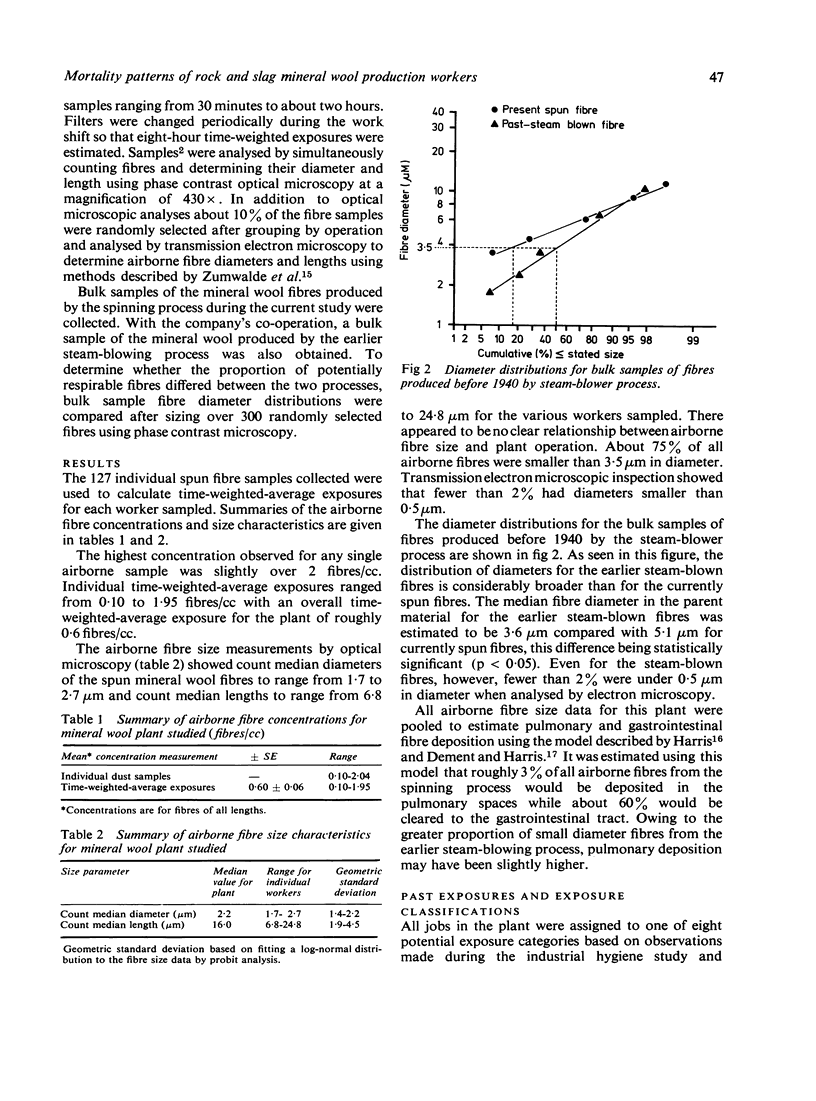
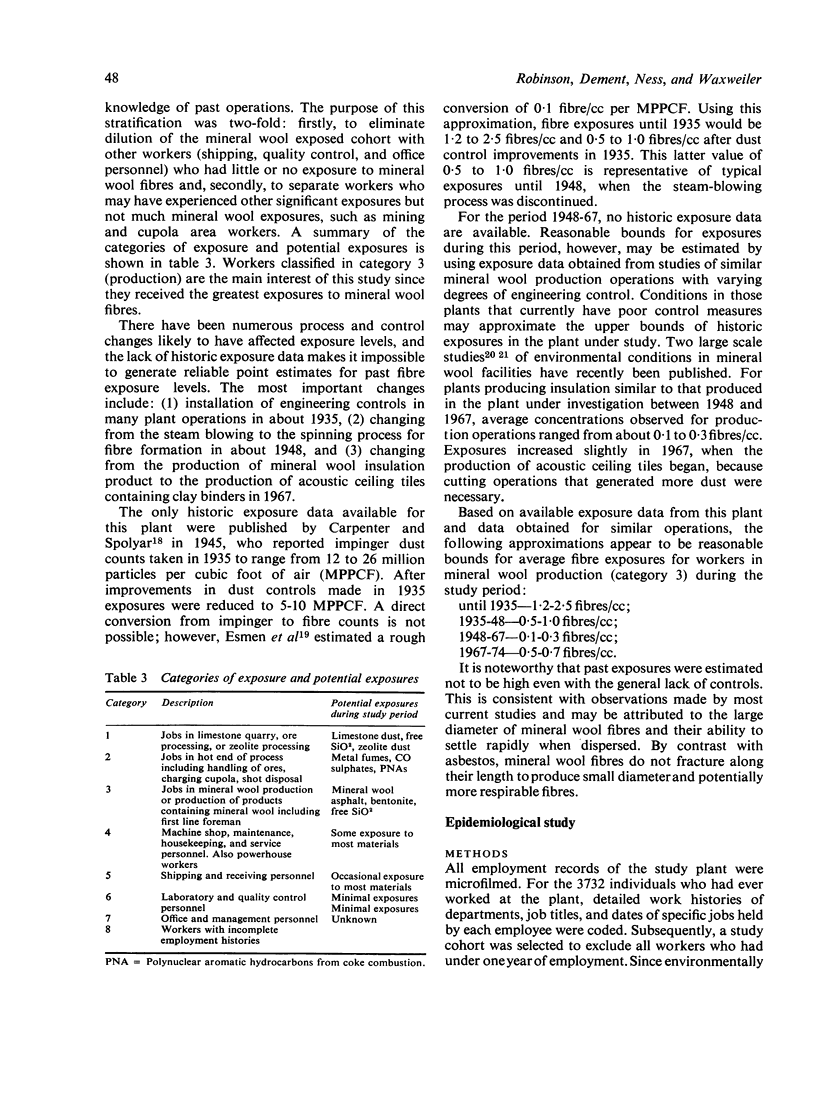
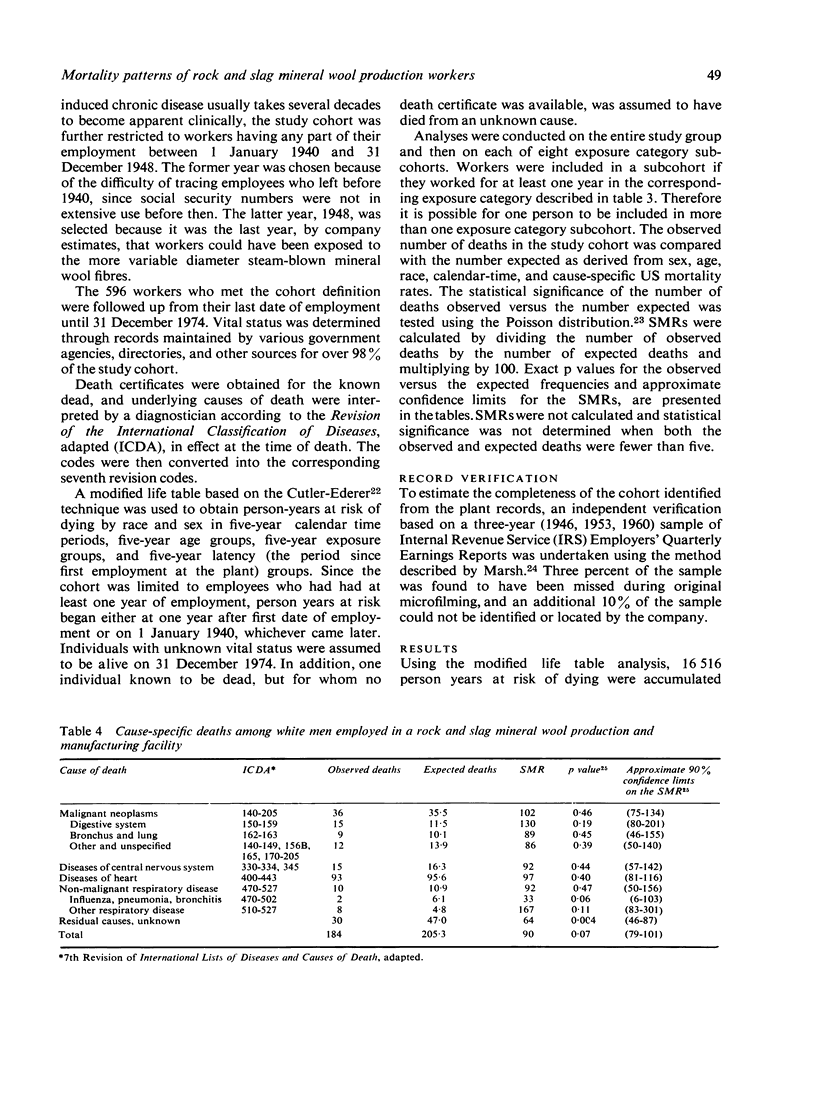

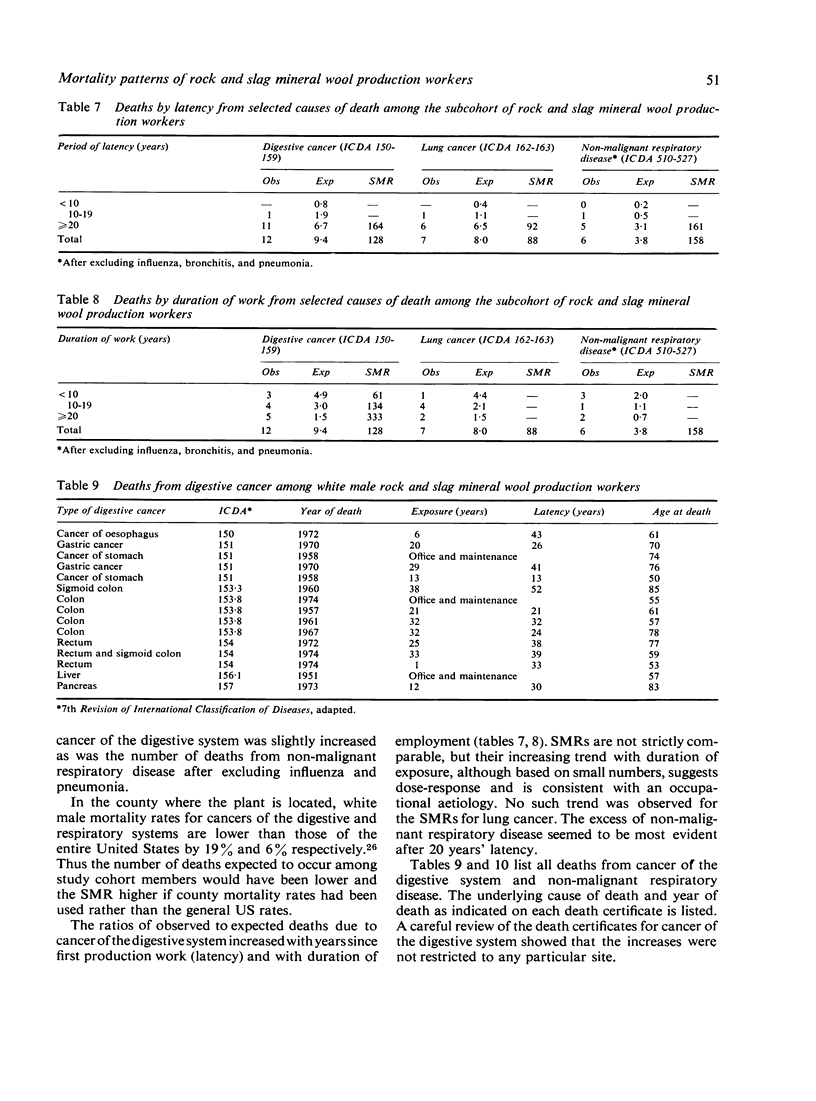
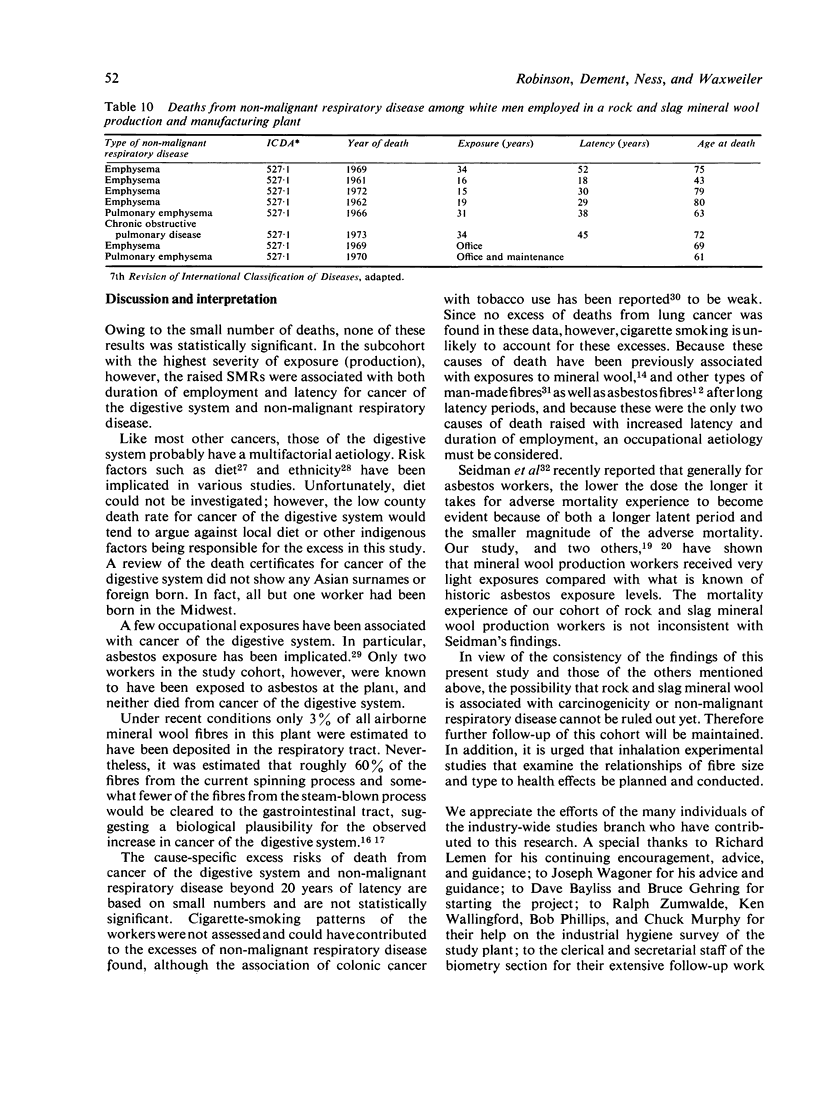

Selected References
These references are in PubMed. This may not be the complete list of references from this article.
- Burkitt D. P. Epidemiology of cancer of the colon and rectum. Cancer. 1971 Jul;28(1):3–13. doi: 10.1002/1097-0142(197107)28:1<3::aid-cncr2820280104>3.0.co;2-n. [DOI] [PubMed] [Google Scholar]
- CUTLER S. J., EDERER F. Maximum utilization of the life table method in analyzing survival. J Chronic Dis. 1958 Dec;8(6):699–712. doi: 10.1016/0021-9681(58)90126-7. [DOI] [PubMed] [Google Scholar]
- Dement J. M., Zumwalde R. D., Wallingford K. M. Discussion paper: asbestos fiber exposures in a hard rock gold mine. Ann N Y Acad Sci. 1976;271:345–352. doi: 10.1111/j.1749-6632.1976.tb23130.x. [DOI] [PubMed] [Google Scholar]
- Esmen N. A., Hammad Y. Y., Corn M., Whittier D., Kotsko N., Haller M., Kahn R. A. Exposure of employees to man-made mineral fibers: mineral wool production. Environ Res. 1978 Apr;15(2):262–277. doi: 10.1016/0013-9351(78)90103-2. [DOI] [PubMed] [Google Scholar]
- Esmen N., Corn M., Hammad Y., Whittier D., Kotsko N. Summary of measurements of employee exposure to airborne dust and fiber in sixteen facilities producing man-made mineral fibers. Am Ind Hyg Assoc J. 1979 Feb;40(2):108–117. doi: 10.1080/15298667991429408. [DOI] [PubMed] [Google Scholar]
- Marsh G. M., Enterline P. E. A method for verifying the completeness of cohorts used in occupational mortality studies. J Occup Med. 1979 Oct;21(10):665–670. [PubMed] [Google Scholar]
- Seidman H., Selikoff I. J., Hammond E. C. Short-term asbestos work exposure and long-term observation. Ann N Y Acad Sci. 1979;330:61–89. doi: 10.1111/j.1749-6632.1979.tb18710.x. [DOI] [PubMed] [Google Scholar]
- Selikoff I. J. Lung cancer and mesothelioma during prospective surveillance of 1249 asbestos insulation workers, 1963-1974. Ann N Y Acad Sci. 1976;271:448–456. doi: 10.1111/j.1749-6632.1976.tb23146.x. [DOI] [PubMed] [Google Scholar]
- Stanton M. F., Laynard M., Tegeris A., Miller E., May M., Kent E. Carcinogenicity of fibrous glass: pleural response in the rat in relation to fiber dimension. J Natl Cancer Inst. 1977 Mar;58(3):587–603. doi: 10.1093/jnci/58.3.587. [DOI] [PubMed] [Google Scholar]


